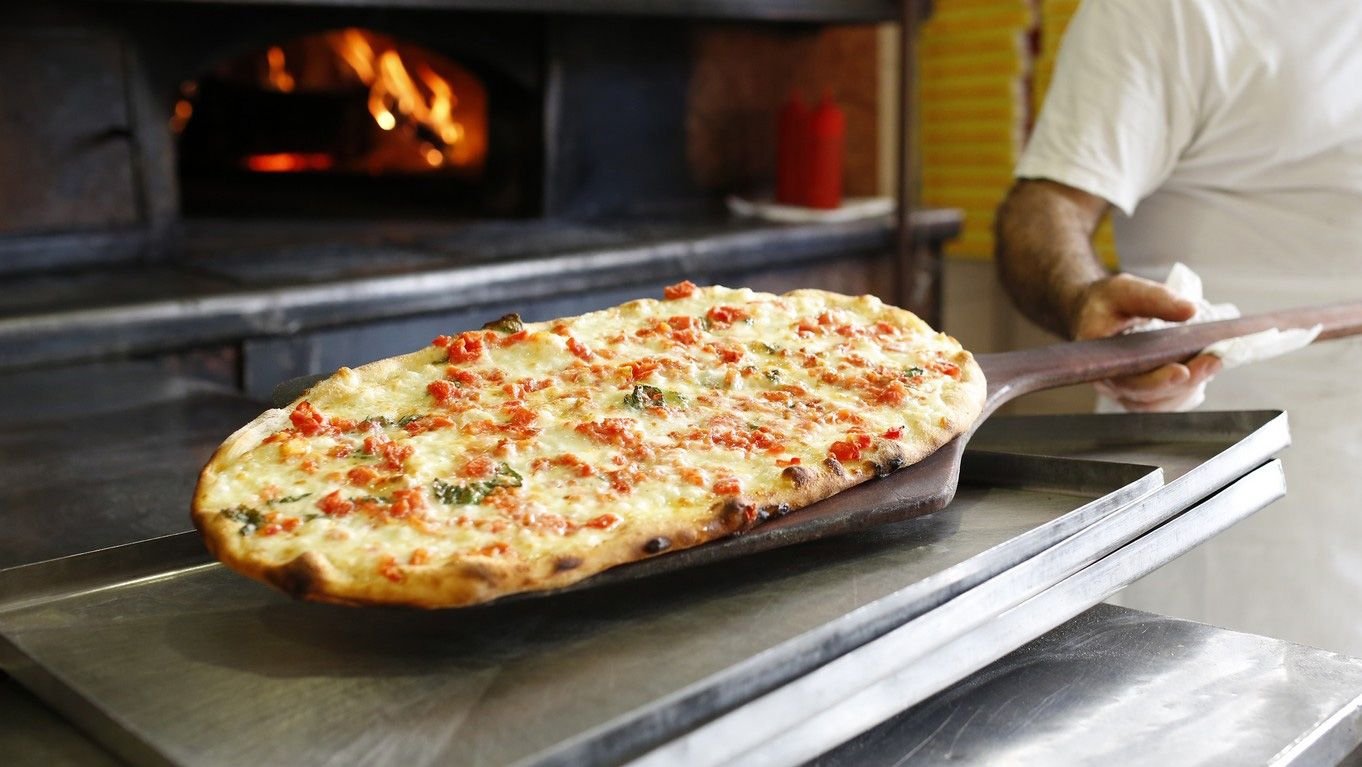Italian pizza is renowned for its simplicity, quality ingredients, and traditional preparation methods. Whether you’re dining in Italy or at an Italian restaurant abroad, recognizing authentic Italian pizza can enhance your culinary experience. This guide provides essential tips for identifying genuine Italian pizza, ensuring you savor the true taste of Italy.

The Crust: Thin, Light, and Crisp
Characteristics
- Thin Crust: Authentic Italian pizza, especially Neapolitan style, features a thin, yet soft and chewy crust. It should be foldable, not cracker-like.
- Leopard Spotting: Look for dark, charred spots on the bottom and edges, known as “leopard spotting,” indicating a properly baked pizza in a high-temperature wood-fired oven.
- Cornicione: The edge or “cornicione” should be airy and puffed, showcasing the dough’s proper fermentation and baking.
Tips
- Ask About the Dough: Inquire if the dough is made with Italian 00 flour and if it has undergone a long fermentation process (at least 24 hours) for better flavor and texture.
Ingredients: Fresh and High-Quality
Tomato Sauce
- San Marzano Tomatoes: Authentic Italian pizzas often use San Marzano tomatoes, prized for their sweet flavor and low acidity. These tomatoes are usually crushed or pureed and lightly seasoned.
- Minimalist Approach: The sauce should be simple, highlighting the natural taste of the tomatoes without being overly cooked or seasoned.
Cheese
- Mozzarella di Bufala: For a true taste of Italy, look for pizzas topped with Mozzarella di Bufala, made from buffalo milk, which is creamier and richer than regular mozzarella.
- Fior di Latte: Another authentic option is Fior di Latte, a fresh cow’s milk mozzarella that is slightly less rich but still creamy and flavorful.
Toppings
- Quality Over Quantity: Authentic Italian pizzas use fewer toppings but of the highest quality. Fresh basil, extra virgin olive oil, and high-quality cured meats or vegetables are common.
- Seasonal and Local: Traditional Italian pizzerias often use seasonal and locally sourced ingredients, ensuring freshness and flavor.
Baking Method: Wood-Fired Oven
Characteristics
- High Temperature: Authentic Italian pizzas are baked in wood-fired ovens at extremely high temperatures (around 900°F or 485°C), cooking the pizza in just 60-90 seconds.
- Wood-Fired Flavor: The wood-fired oven imparts a unique smoky flavor and achieves the perfect balance of a crisp crust and tender interior.
Tips
- Check the Oven: Ask the pizzeria if they use a wood-fired oven. The presence of such an oven is a strong indicator of traditional baking methods.
- Observe the Process: If possible, watch the pizza being made. Authentic pizzerias will have skilled pizzaiolos who expertly handle the dough and monitor the baking process.
The Menu: Classic Options
Neapolitan Classics
- Margherita: Topped with San Marzano tomatoes, Mozzarella di Bufala, fresh basil, and a drizzle of extra virgin olive oil.
- Marinara: Featuring just tomato sauce, garlic, oregano, and olive oil—no cheese.
Regional Variations
- Roman Pizza: Known for its thin, crispy crust. Common toppings include potatoes and rosemary (Pizza Patate e Rosmarino) or white pizzas with minimal tomato sauce.
- Sicilian Pizza: A thicker, rectangular pizza often topped with onions, anchovies, tomatoes, and herbs.
Tips
- Stick to Traditional Pizzas: Authentic Italian pizzerias will offer traditional pizzas with a focus on classic recipes rather than heavily loaded or unconventional toppings.
Atmosphere and Presentation
Characteristics
- Simple and Unpretentious: Authentic Italian pizzerias often have a casual, unpretentious atmosphere. The focus is on the food rather than elaborate decor.
- Proper Presentation: The pizza should be served hot from the oven, with a slight char on the crust and evenly distributed toppings.
Tips
- Local Recommendations: When in Italy, ask locals for pizzeria recommendations. They can direct you to the most authentic spots.
- Look for Certification: Some pizzerias are certified by the Associazione Verace Pizza Napoletana (AVPN), which ensures adherence to traditional Neapolitan pizza-making standards.
Conclusion
In conclusion, finding authentic Italian pizza requires attention to detail, from the quality of ingredients and preparation methods to the atmosphere of the pizzeria. By focusing on these key aspects, you can ensure that you’re experiencing pizza as it was meant to be enjoyed, whether you’re in Italy or dining at an Italian restaurant elsewhere. Embrace the simplicity, savor the quality, and relish the rich tradition behind every slice of authentic Italian pizza.











